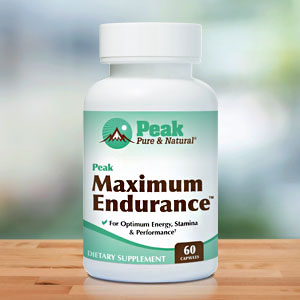Get Easy Health Digest™ in your inbox and don’t miss a thing when you subscribe today. Plus, get the free bonus report, Mother Nature’s Tips, Tricks and Remedies for Cholesterol, Blood Pressure & Blood Sugar as my way of saying welcome to the community!
Stretch away low back pain in 6 simple moves

If you’re living with low back pain, you’re not alone.
In fact, not only is it estimated that 31 million Americans are suffering from the condition at any given time, back pain now ranks as the number one cause of disability worldwide.
Luckily, whether your pain is sharp and shooting, dull and achy or radiating to other areas of your back and causing intense muscle spasms, there are things you can do at home to find relief.
Why does my low back hurt?
When you think about the structure of your spine, it’s easy to see why problems and pain can not only start but become chronic.
After all, since the lower half of your spine does the job of carrying the load (weight-bearing) for the rest of your body, it is made up of just five vertebrae. This is less than the number found in your neck at seven — and far less than the amount in your mid-back at 12.
Your low back is also where your spine connects to your pelvis and therefore experiences high levels of stress and movement. All of this can lead to wear and tear over the long-term or even acute injuries.
The result of all of this is pain.
The good news is that by using the correct stretches, you can relax the muscles in your low back that are tight, while strengthening the ones that are weak to reduce your pain.
Tips when starting low back stretching
The first thing to remember when you start any program to improve your back pain is to start slowly and gently. It’s also a good idea, especially if you suspect your pain is from an injury or an underlying condition, to let your doctor check things out before you get started.
All of the stretches below can be performed one to two times a day. Of course, if you’re overly sore or your pain feels worse, you can always skip a day to allow your body time to recover.
If you have trouble visualizing these poses after reading the steps below, you can use the search tool at Pocket Yoga for an illustration.
Low back stretch #1 – Child’s Pose
This resting yoga pose might seem too simple to do anything for your pain, but the truth is there is power in relaxation.
It not only loosens tight back muscles, it can help relieve tension in your pelvic and thigh muscles too.
For Child’s Pose:
- Place your hands and knees on the ground keeping your back flat.
- Allow your body to sink backwards until your hips are resting on your heels and your belly is lowered to your thighs.
- Slowly walk your hands out in front of you.
- Take deep, relaxing breaths to allow the tension in your body to release.
- Hold for up to 60 seconds.
Another great thing about Child’s Pose is that you can return to it at any time during your routine to take a breather or give your muscles time to recover before you move on to the next stretch.
Low back stretch #2: Cat/Cow
From Child’s Pose, you’ll simply press your body back up until you are on all fours with your back flat like a tabletop to move into cat/cow.
For cat/cow:
- Drop your belly down, letting your back curve to the floor and raising your head (cow stretch).
- Hold for 5-10 seconds.
- Lift your belly up and return to your starting position.
- Tuck your belly in, arching your back to the sky and allow your head to fall forward gently (cat stretch).
- Hold for 5-10 seconds.
- Relax your belly and return to your starting position.
- Repeat 10-20 times.
This stretch helps to significantly relax tense low back and core muscles while boosting your spinal flexibility.
Low back stretch #3: Seal Stretch
Next, lower yourself gently forward until you are lying on your stomach to do the seal stretch.
For seal:
- Place your hands underneath your shoulders, with your palms down on the floor.
- Spread your feet slightly.
- Tighten your low back, ab, glute, and thigh muscles to lift your head and chest into a gentle backbend, keeping your pelvis pressed to the floor.
- Hold for up to one minute.
Not only does seal pose stretch your spine, it also strengthens vital muscles to allow it to stand up to the stress of your daily life.
Low back stretch #4: Knee to Chest
After the seal stretch, turn and lie on your back with your head down and your body relaxed to perform the knee to chest stretch.
For knee to chest:
- Bend your knees until your feet are flat on the floor.
- Reach with both hands, interlacing your fingers to hold your knee or shin of your right leg (depending on your flexibility).
- Gently pull your knee to your chest while keeping your opposite foot flat on the floor.
- Focus on your breathing and allow the muscles in your low back, hips and legs to relax.
- Hold for up to 1 minute
- Release the stretch and return to the starting position.
- Repeat on the opposite side, performing the stretch three times for each leg.
Tip: If you can’t reach your knee, you can still perform the stretch by wrapping a towel around your leg.
Low back stretch #5: Pelvic Tilt
While you’re still lying on your back, you can move to the pelvic tilt exercise. While it’s not a true stretch, it works to strengthen your core, which in turn can help ease the pain in your low back.
For the pelvic tilt:
- Bend your knees to place your feet flat on the floor.
- Tighten your abdominal muscles, pressing your low back into the floor.
- Focus on relaxing your breathing.
- Hold for 10 seconds.
- Repeat 3 to 5 times.
Low back stretch #6: Piriformis Stretch
For your final stretch, you’ll remain on your back, lying on the floor to stretch the deep muscles in your buttocks. And since your pelvis connects directly to your low back, stretching these muscles can help ease your pain and get you moving again.
For piriformis stretch:
- Bend both knees so that your feet are flat on the floor.
- Cross your right ankle and lay it on your left knee.
- Interlock your hands behind your left thigh and gently lift it toward your chest (you should feel a stretch in your right hip/buttocks region).
- Hold for up to 1 minute.
- Switch sides and repeat.
More help for low back pain
For additional at-home help for your low back pain, you can also try yoga. Studies show the 5,000-year-old practice is just as effective as physical therapy when it comes to chronic low back problems.
Additionally, a 2000 study that pitted chiropractic against traditional medicine proved the power of chiropractic in treating low back pain.
Finally, there are five natural supplements to banish back pain, recommended by Dr. Michael Cutler, a graduate of Tulane University School of Medicine and a board-certified family physician with more than 20 years of experience. These supplements could help you reduce the inflammation that is making your back pain worse, improve circulation to your joints and ease pain and stiffness.
Editor’s note: While you’re doing all the right things to protect your brain as you age, make sure you don’t make the mistake 38 million Americans do every day — by taking a drug that robs them of an essential brain nutrient! Click here to discover the truth about the Cholesterol Super-Brain!
Sources:
Back Pain Facts and Statistics – American Chiropractic Association














